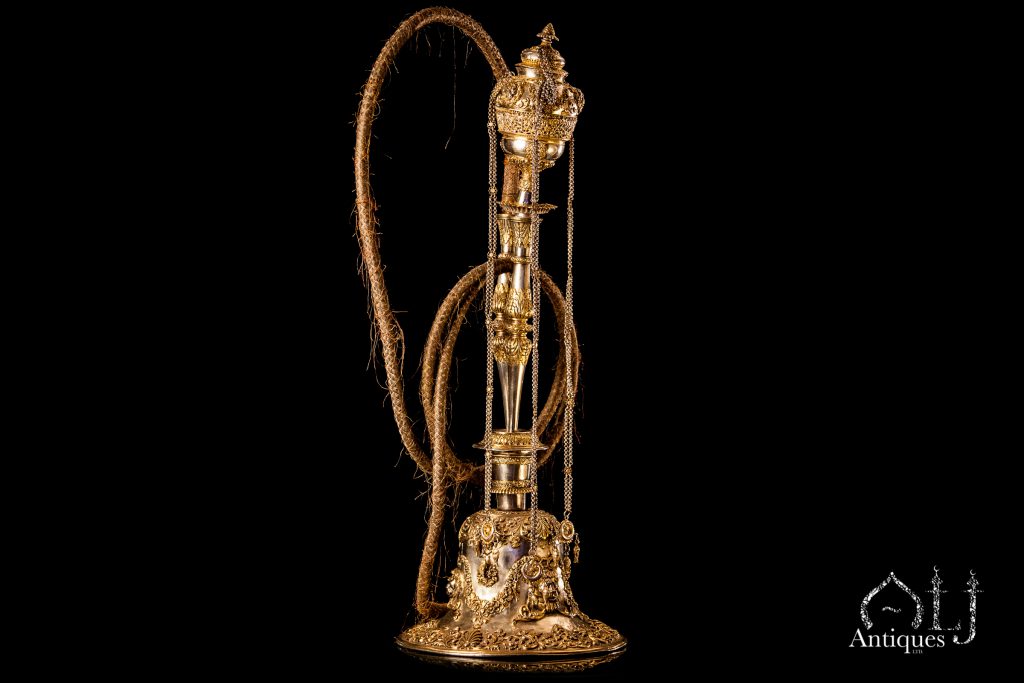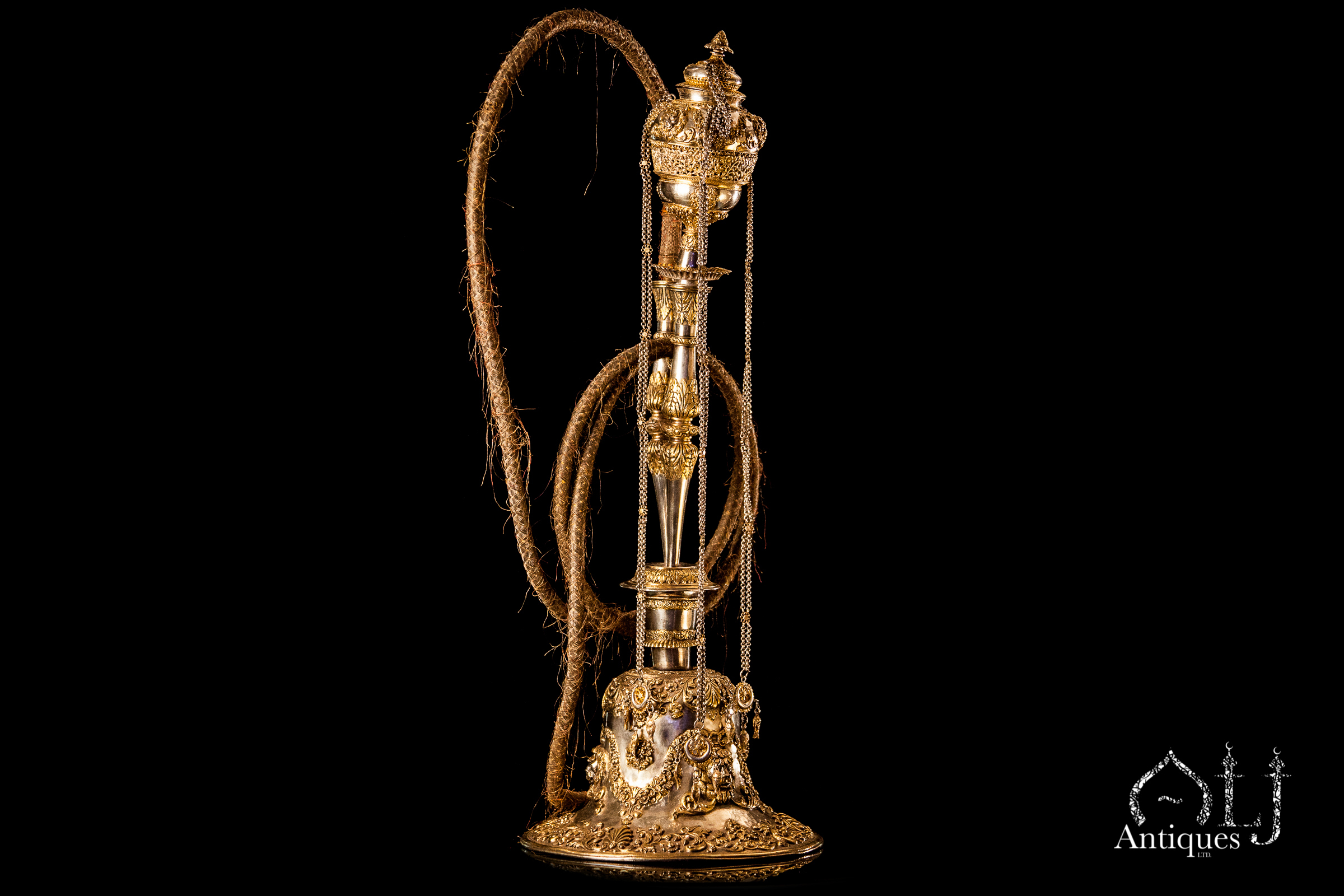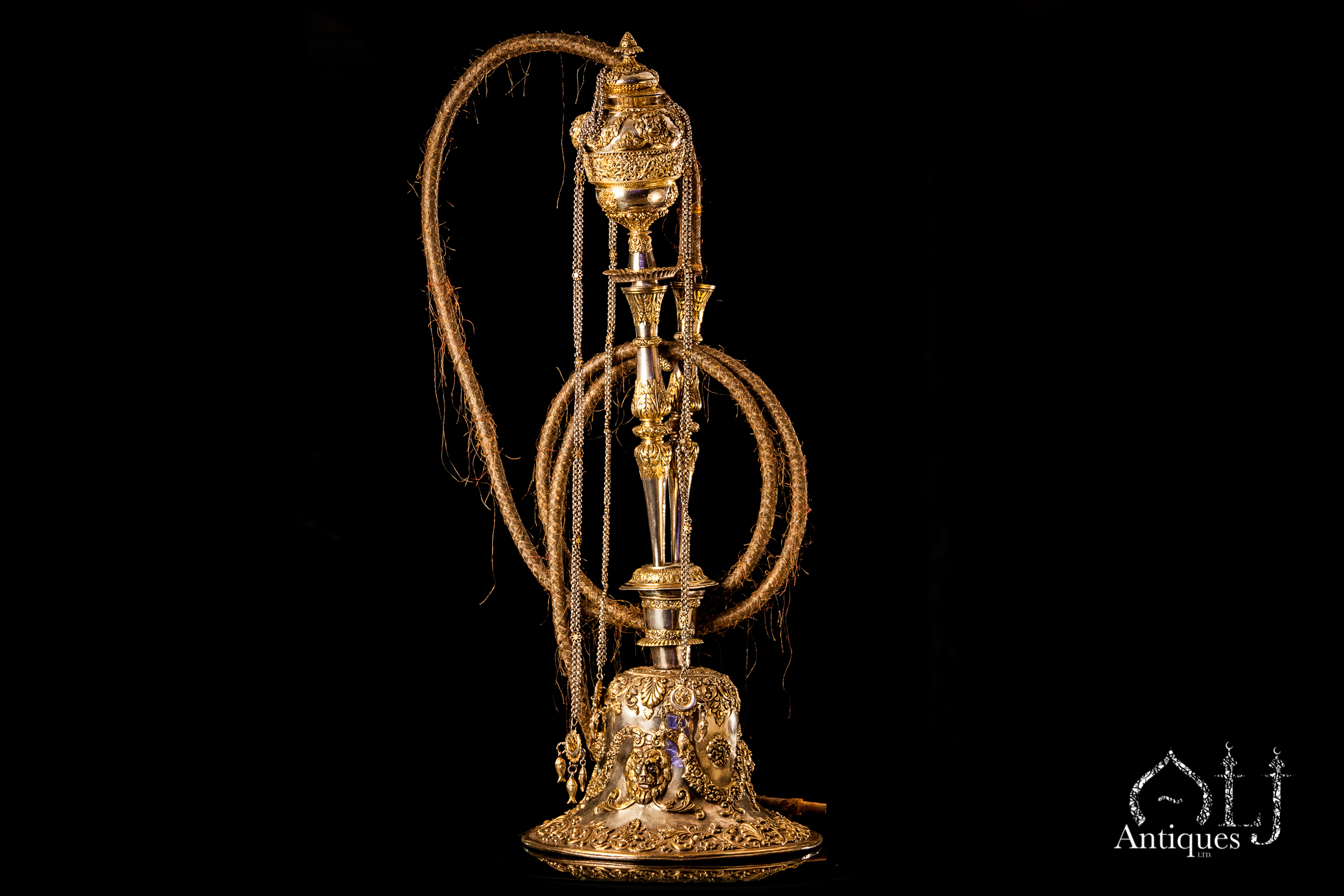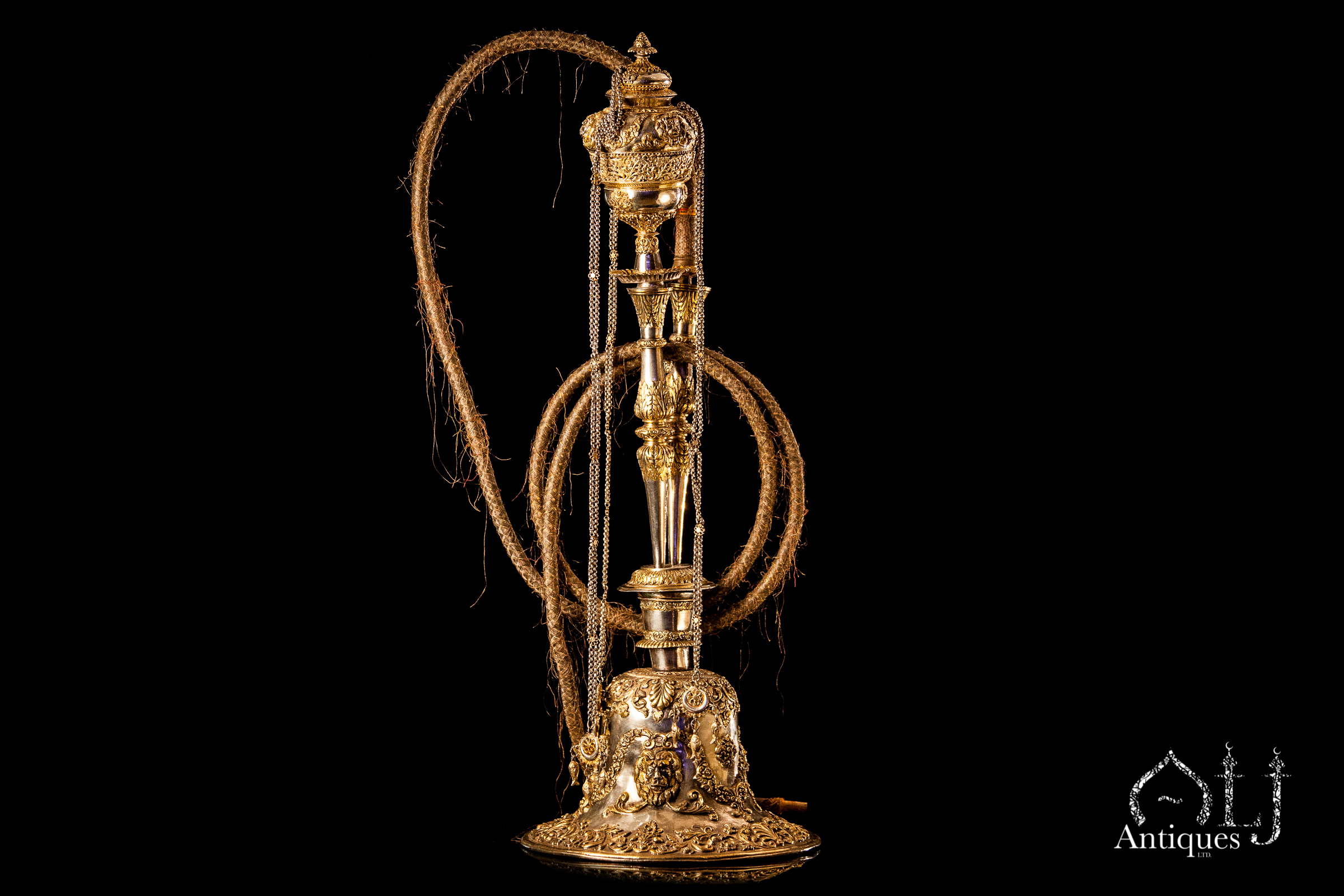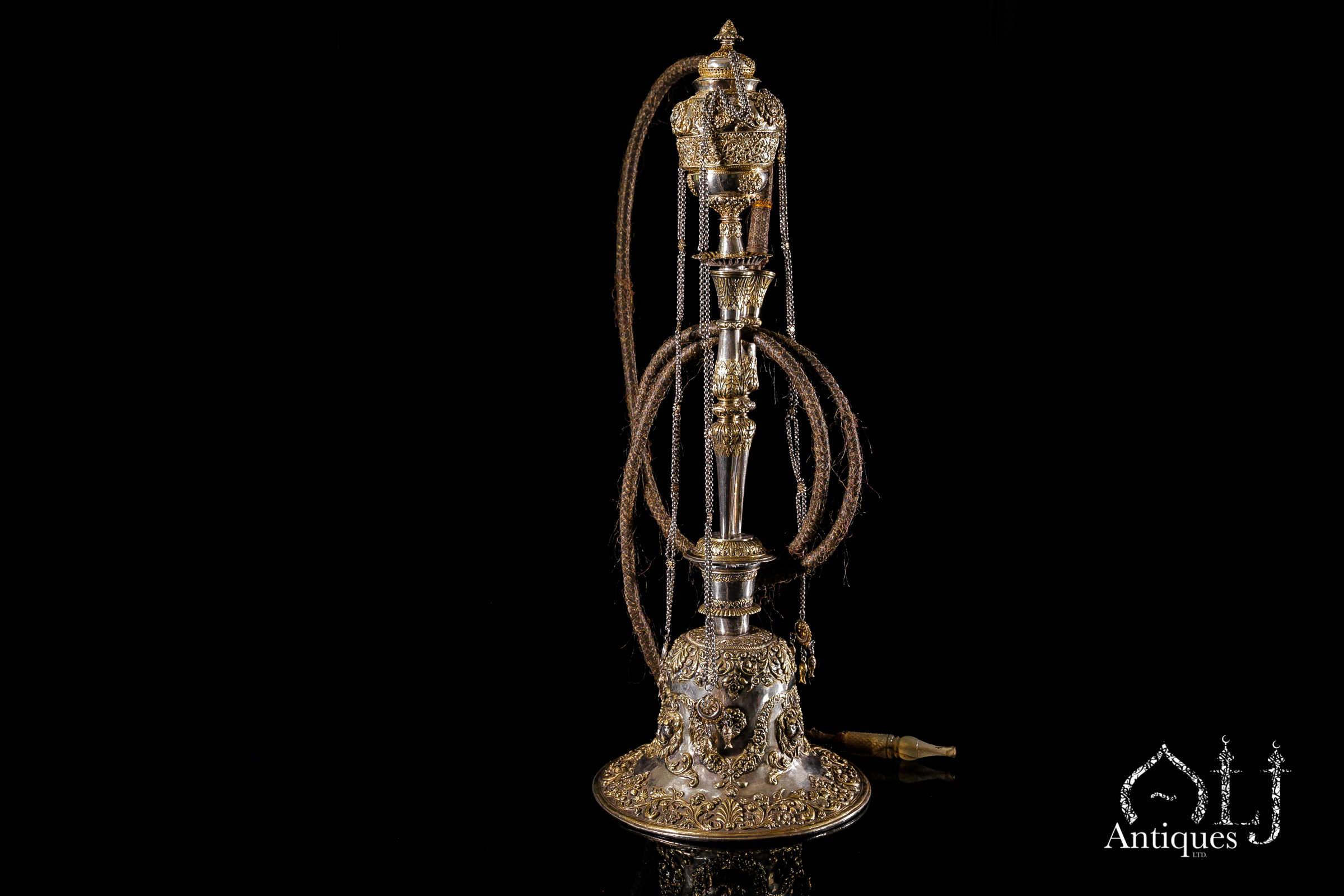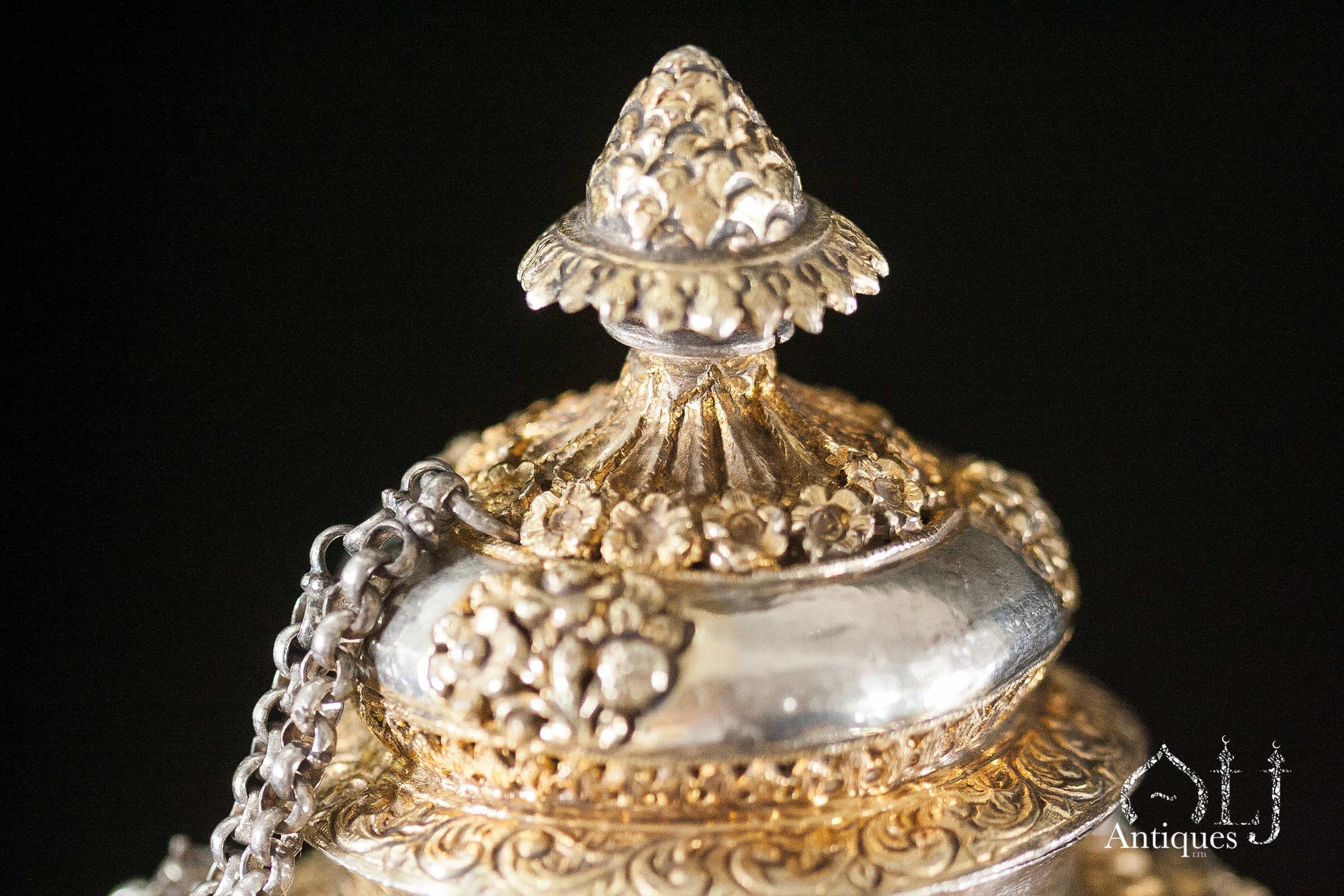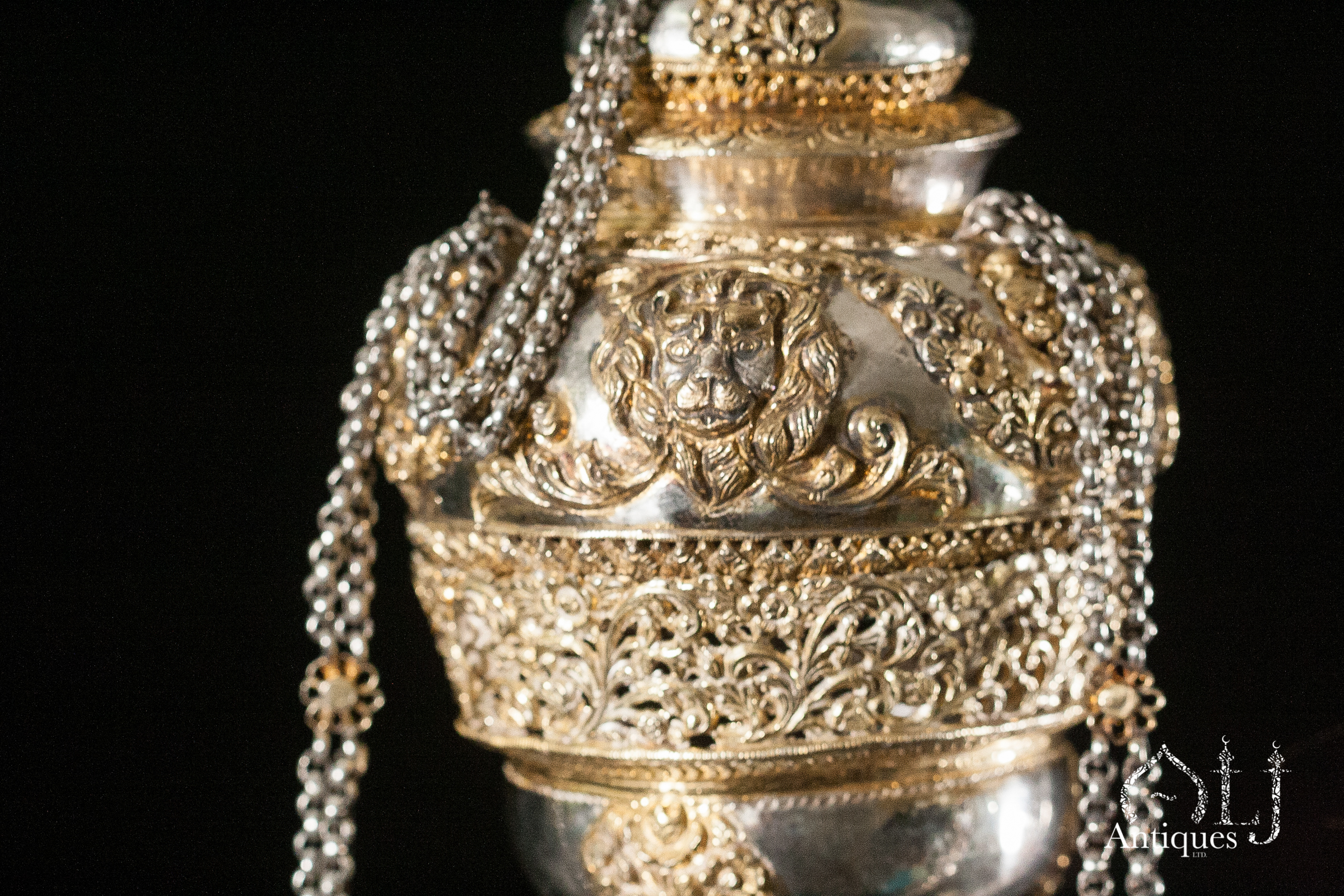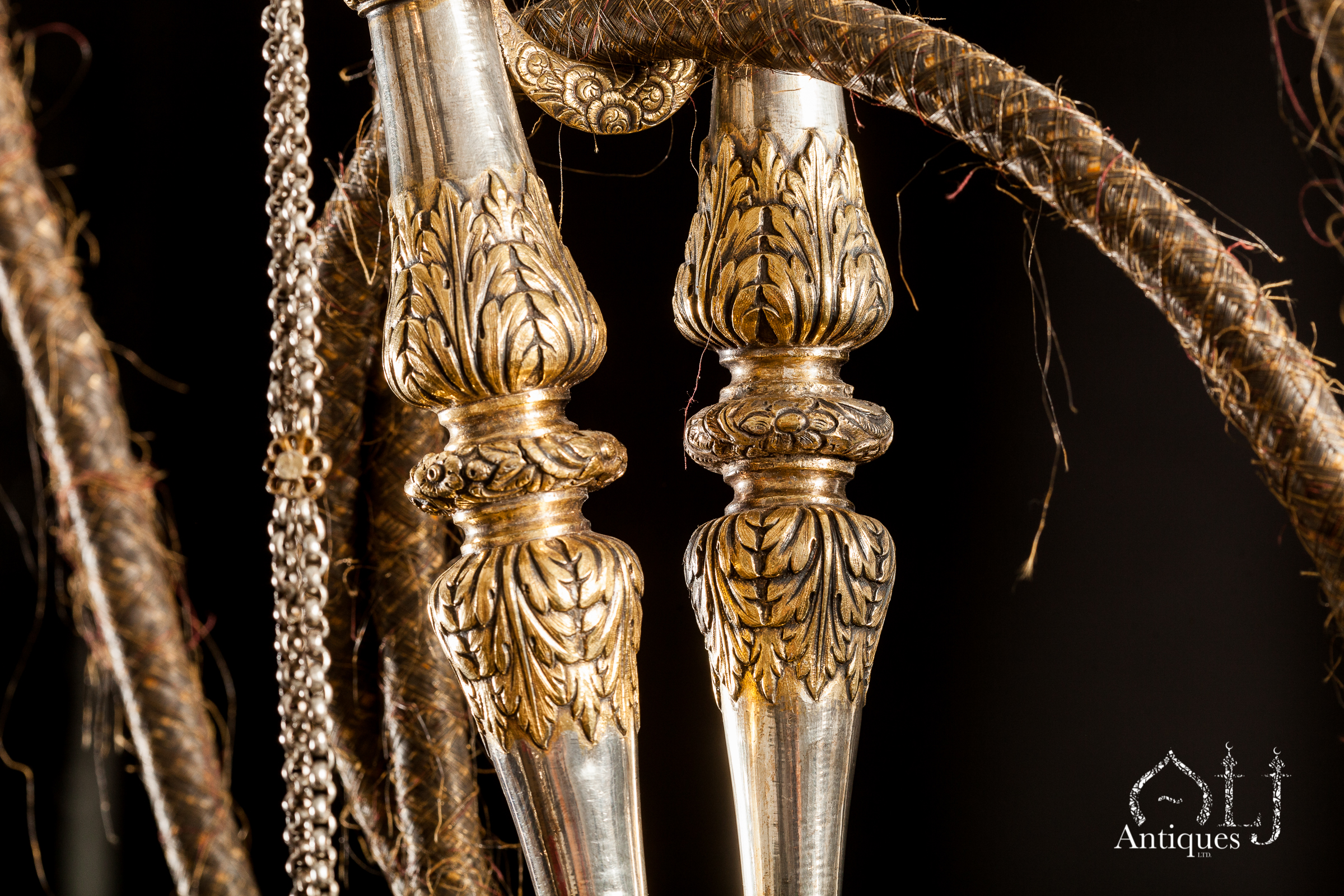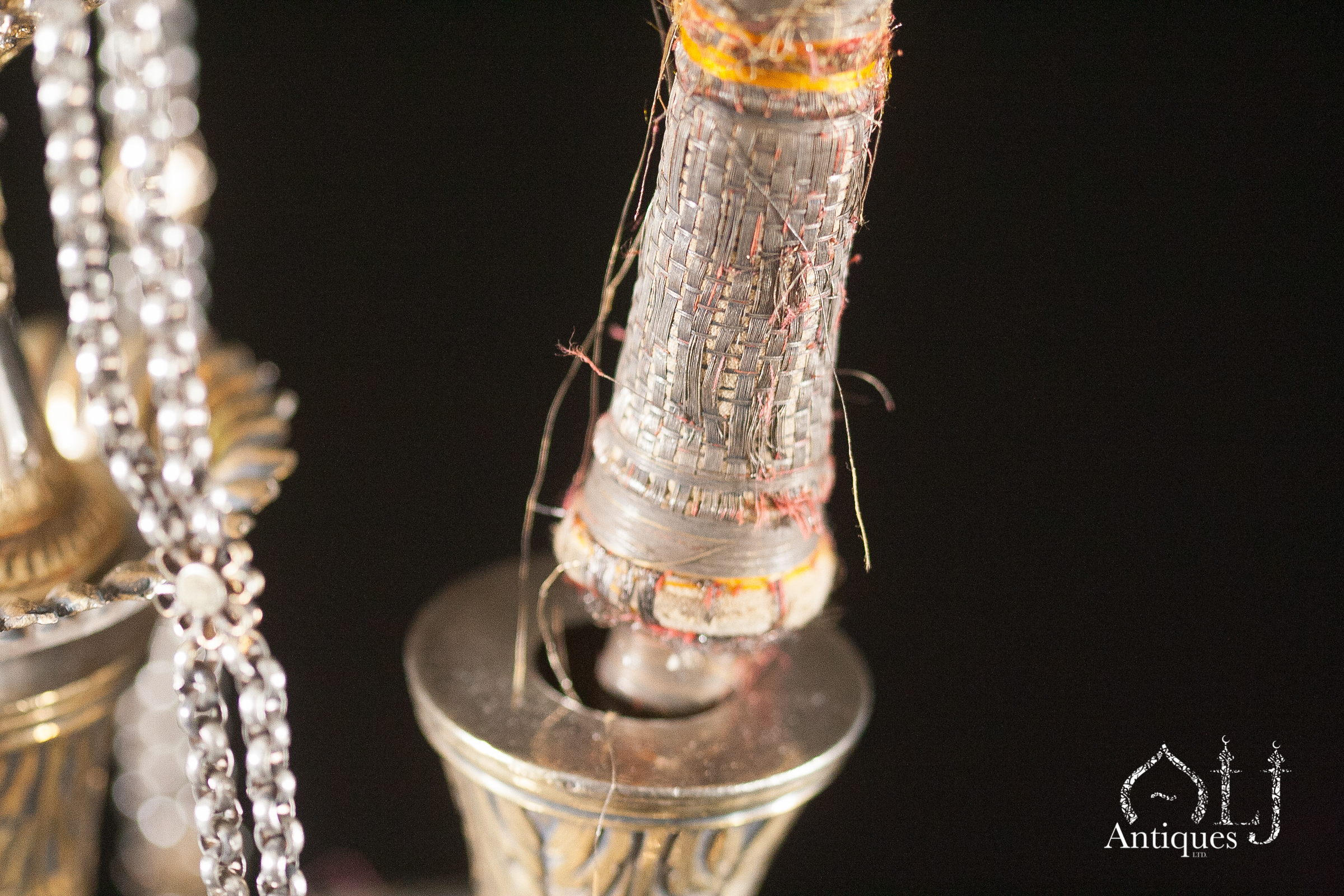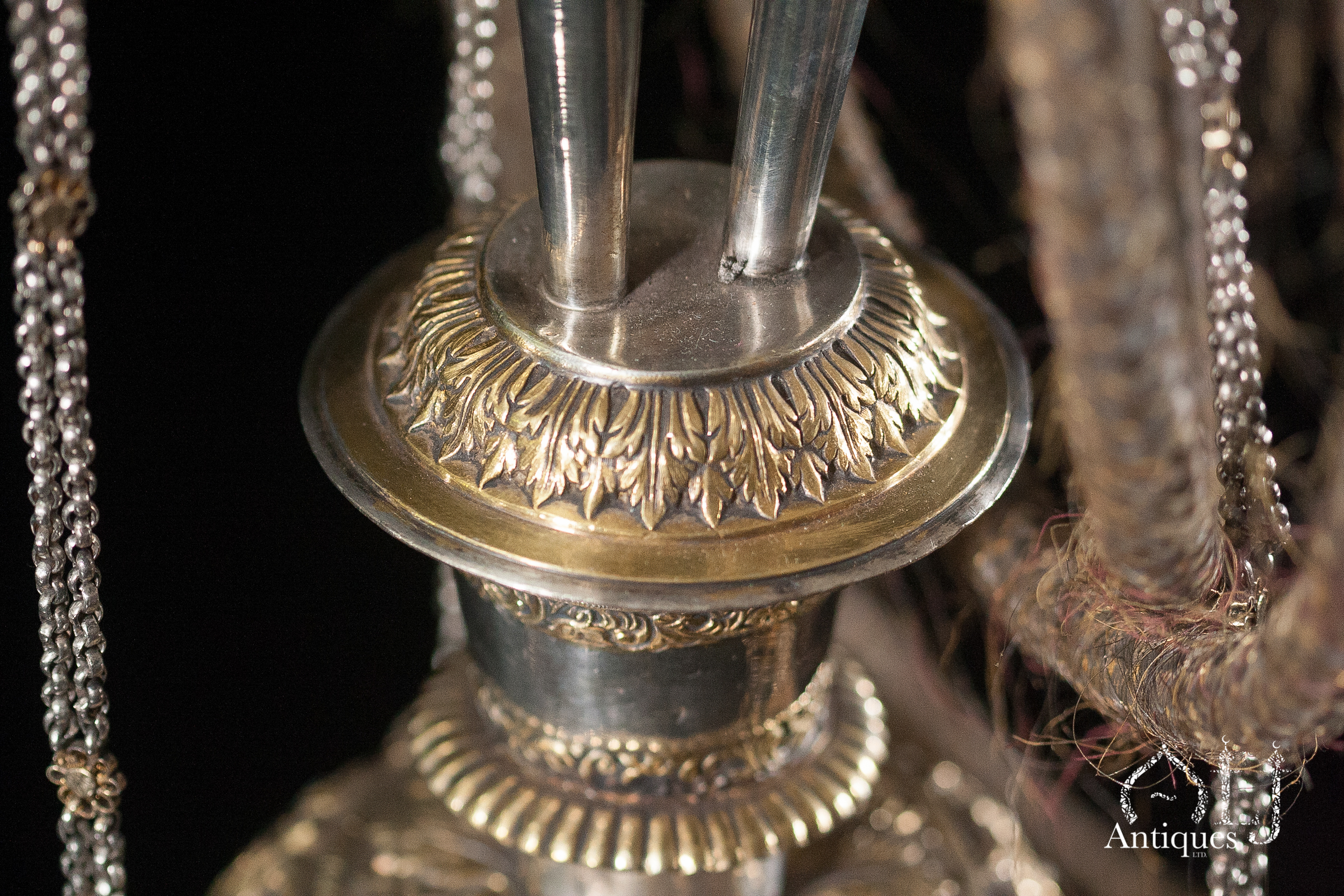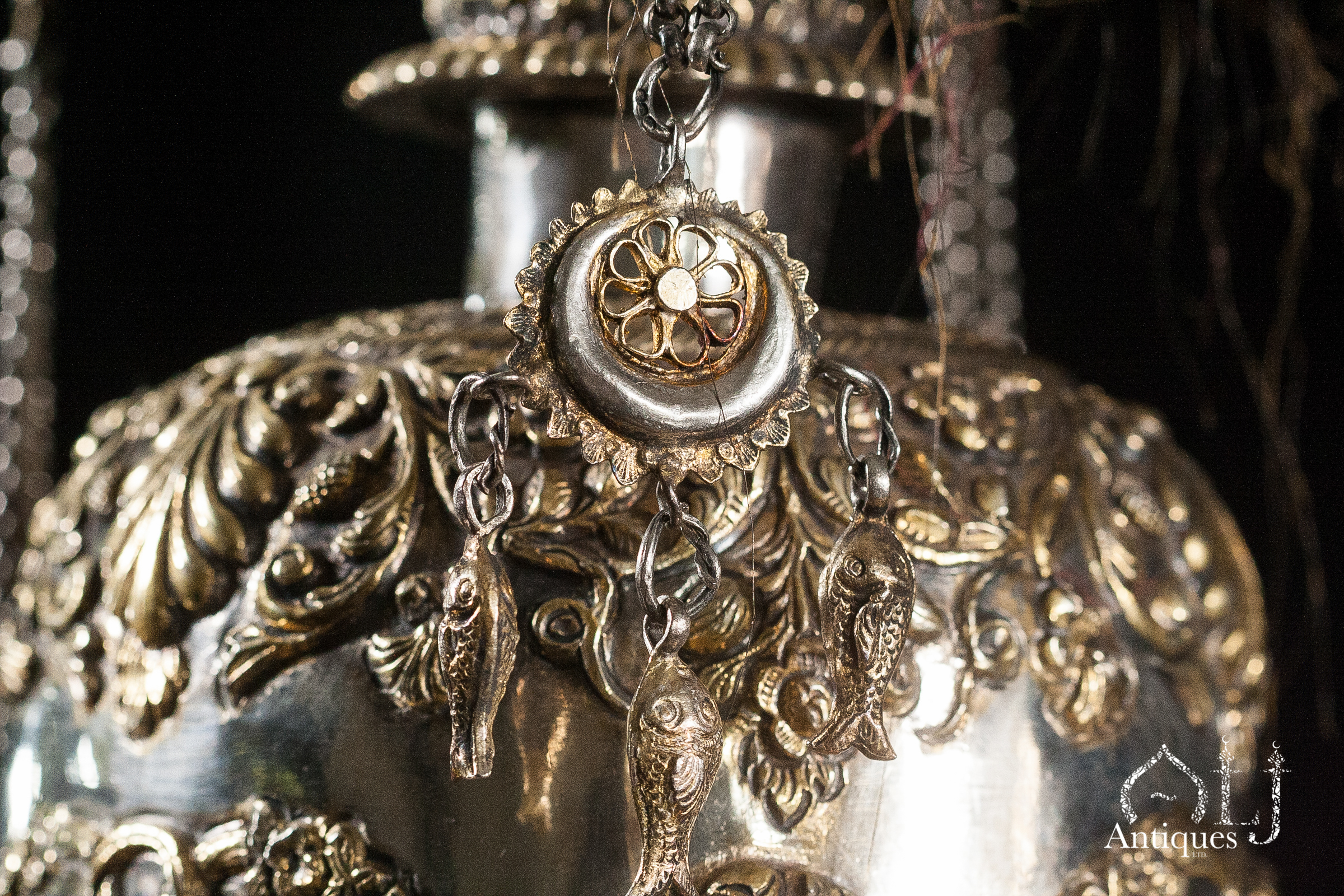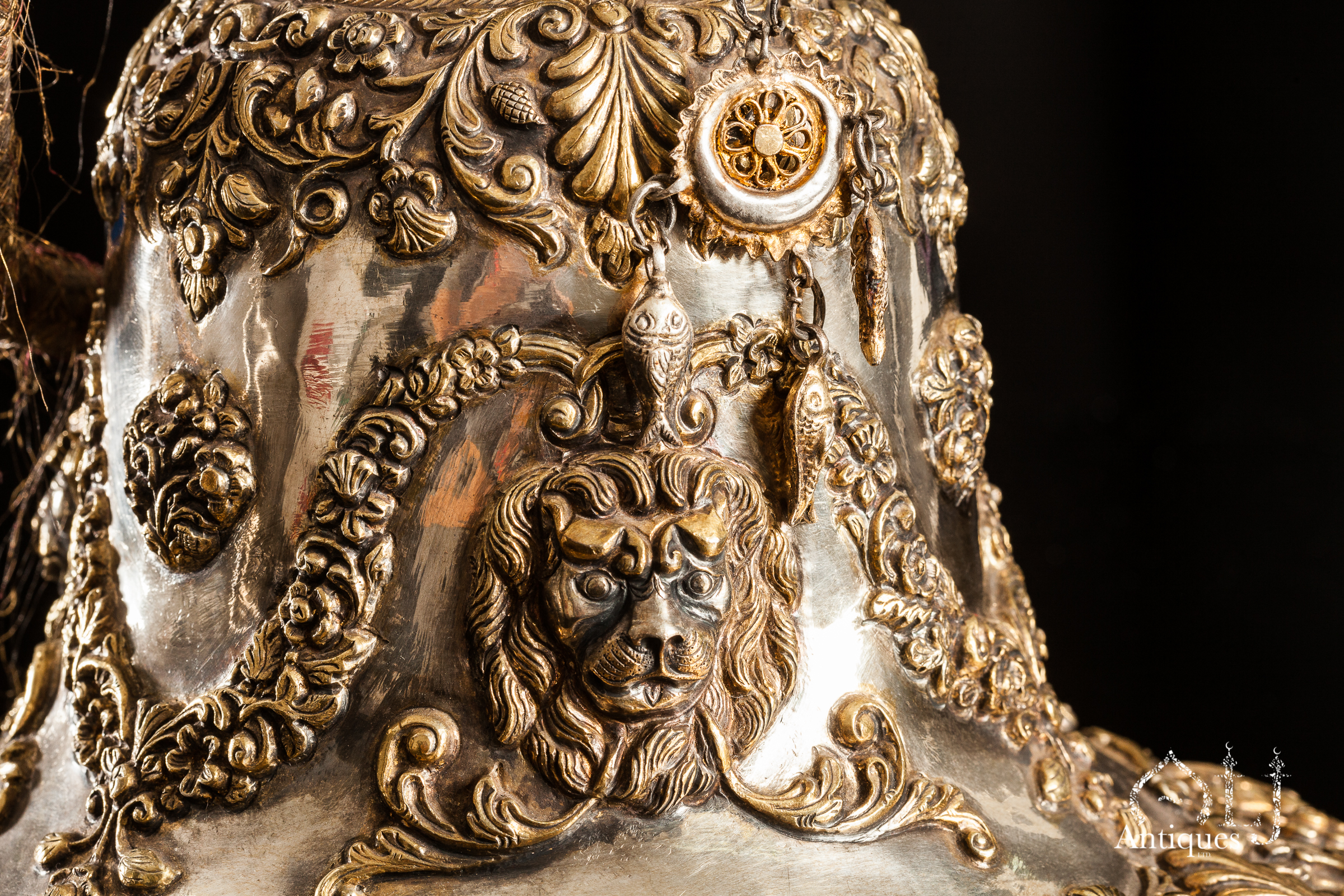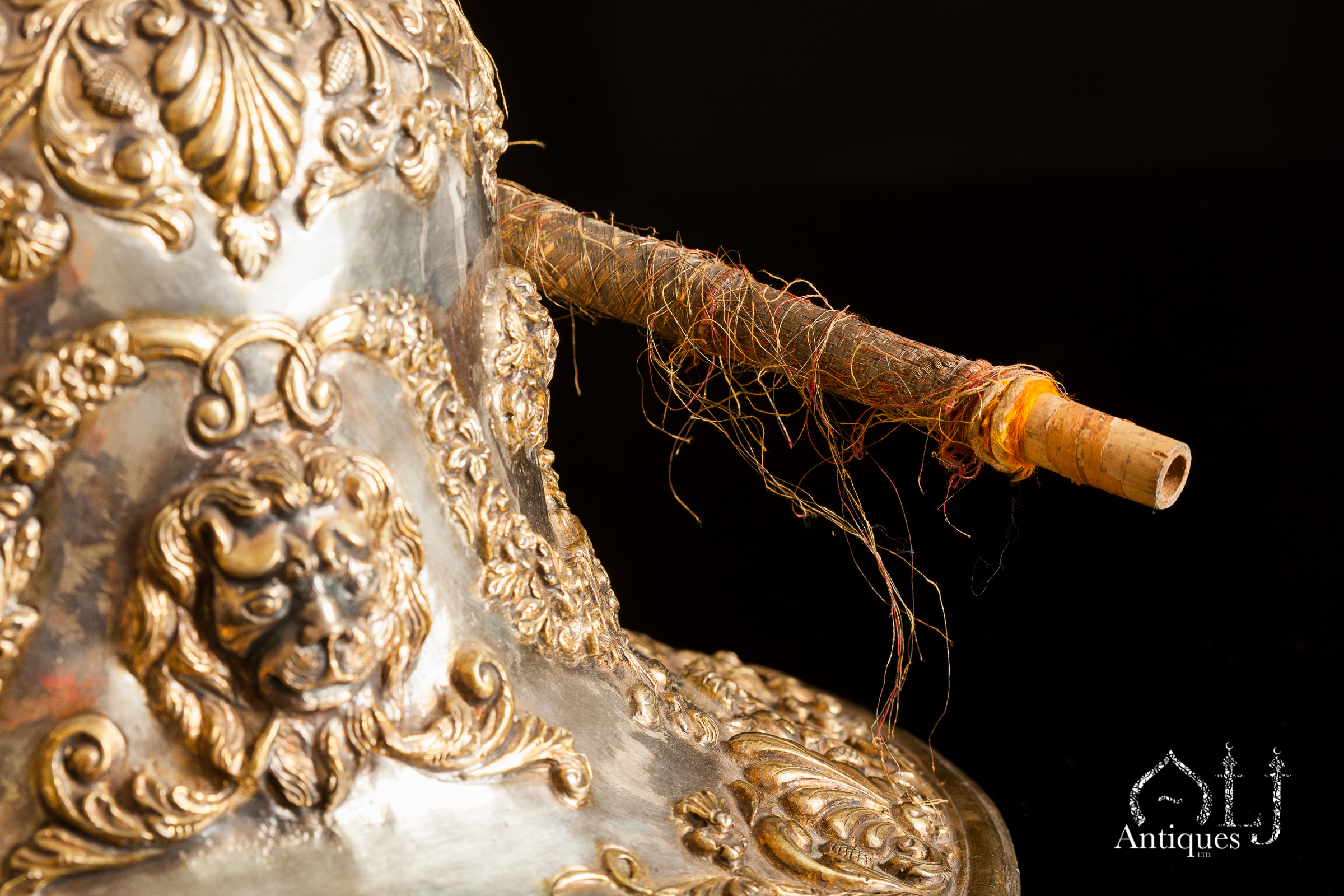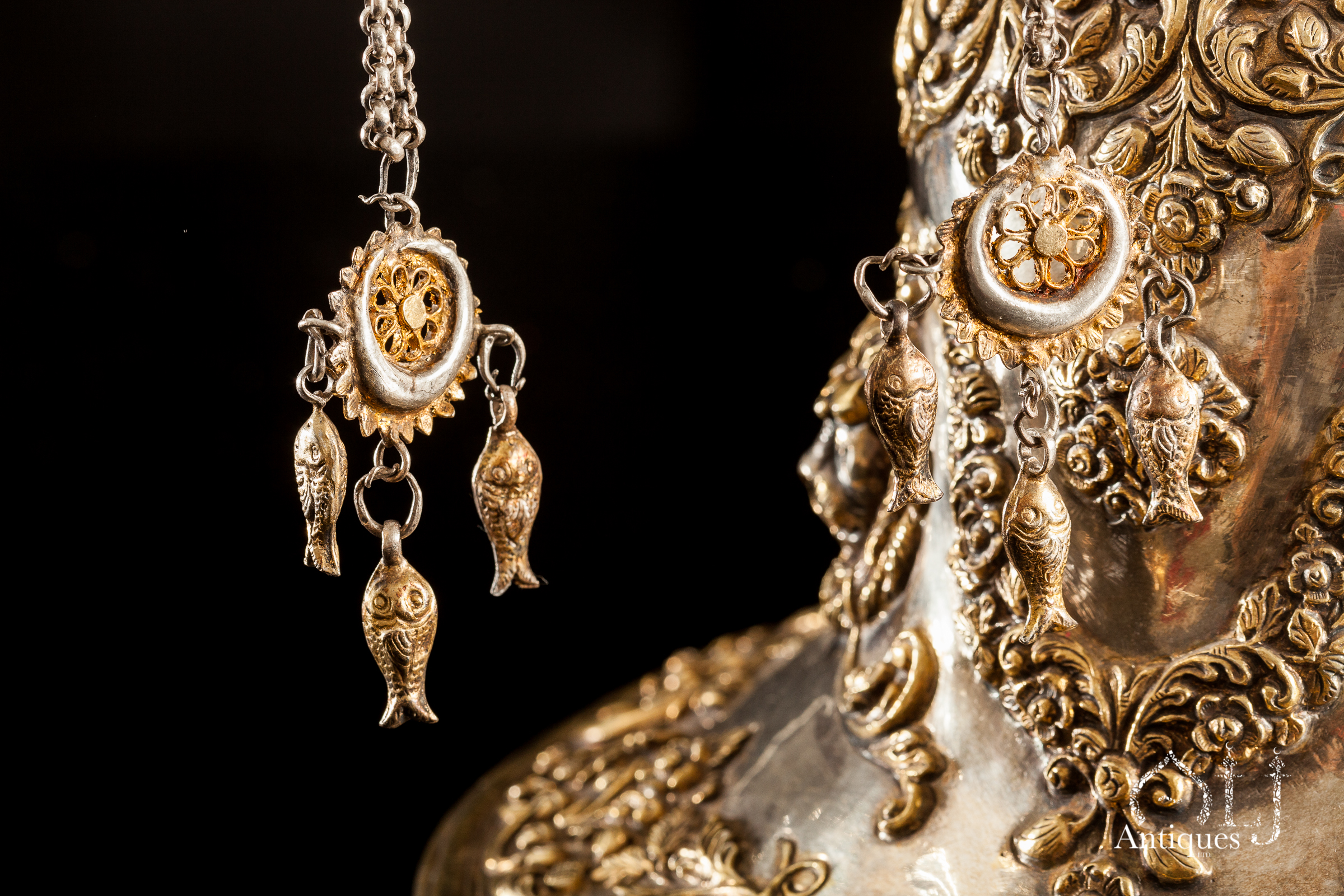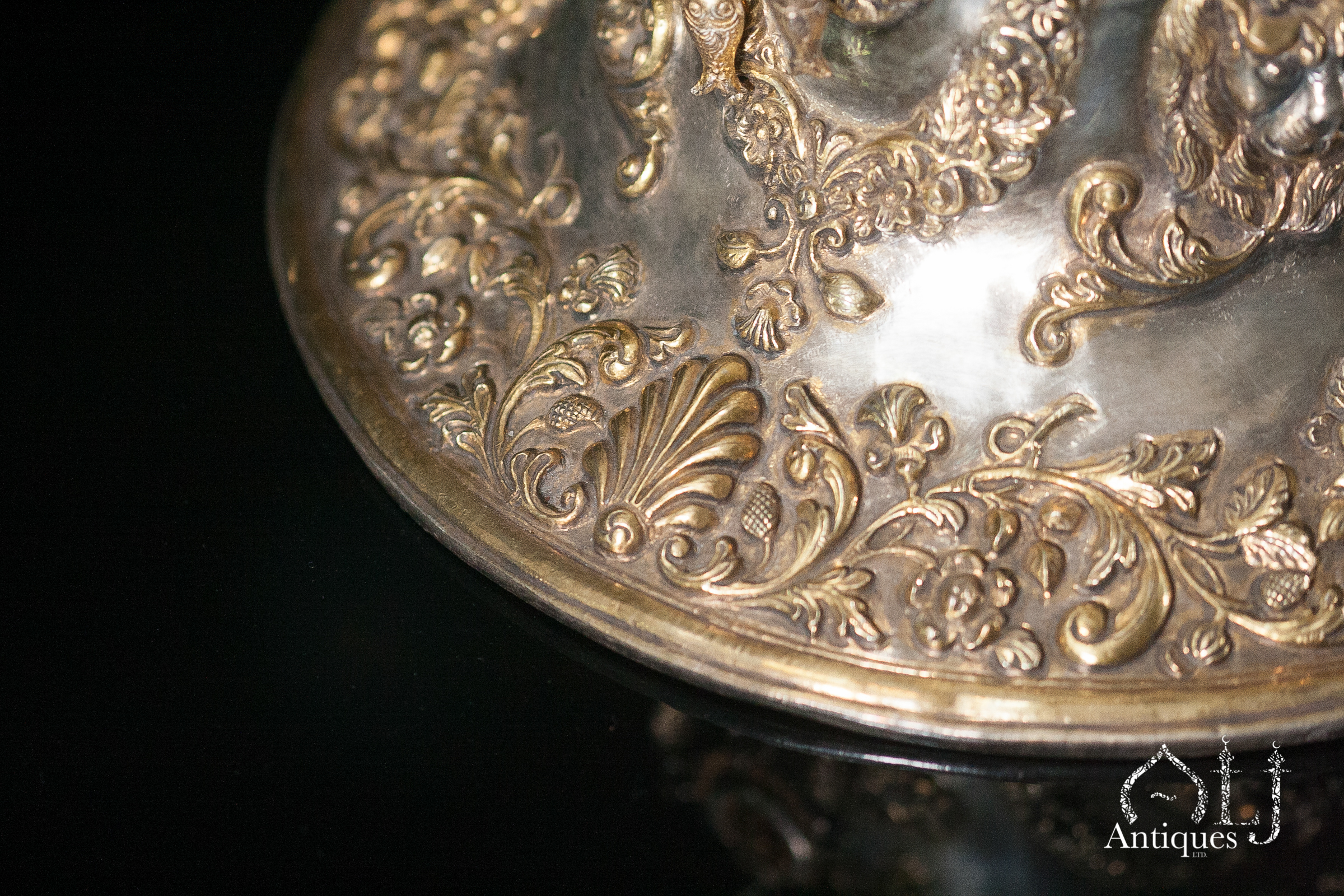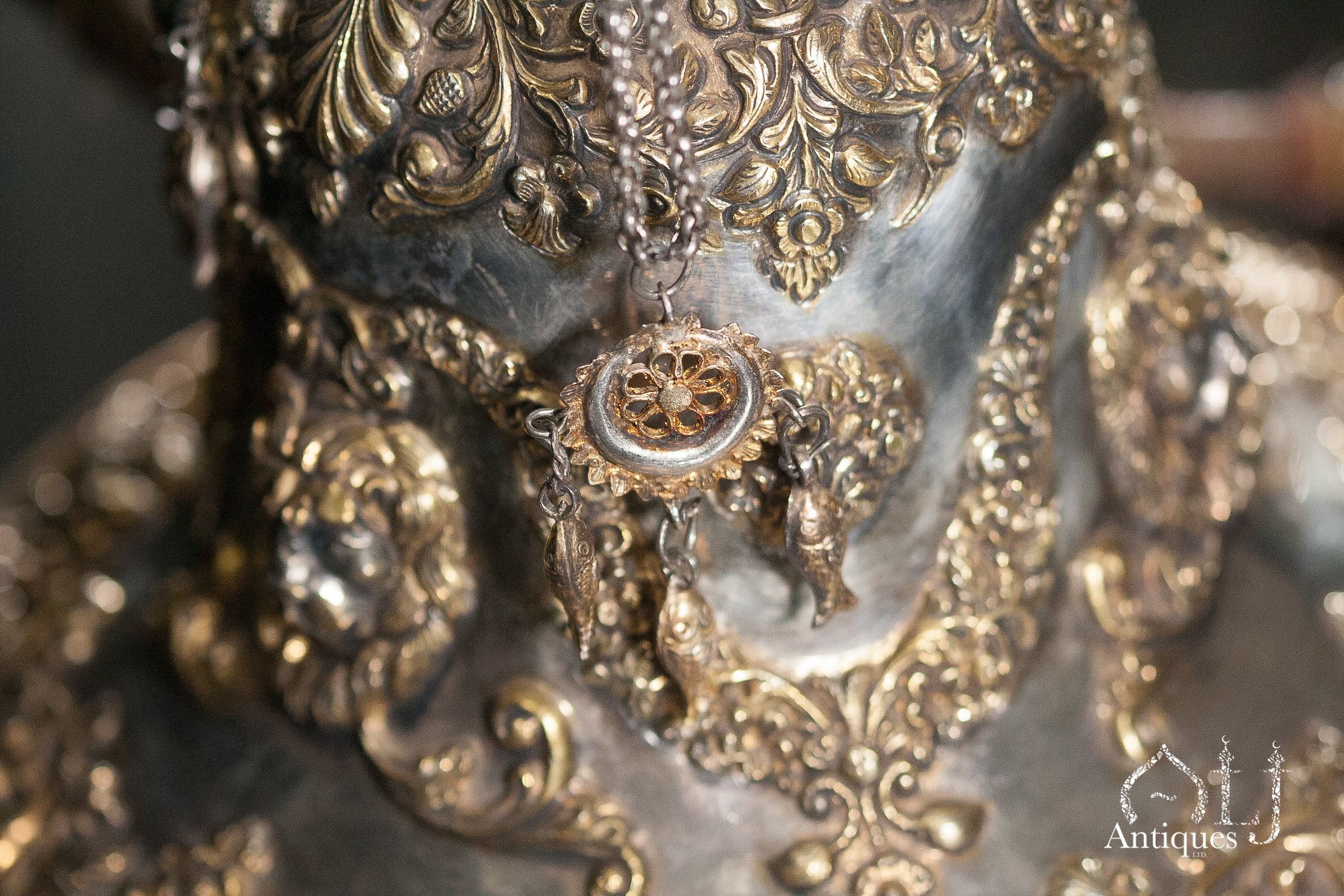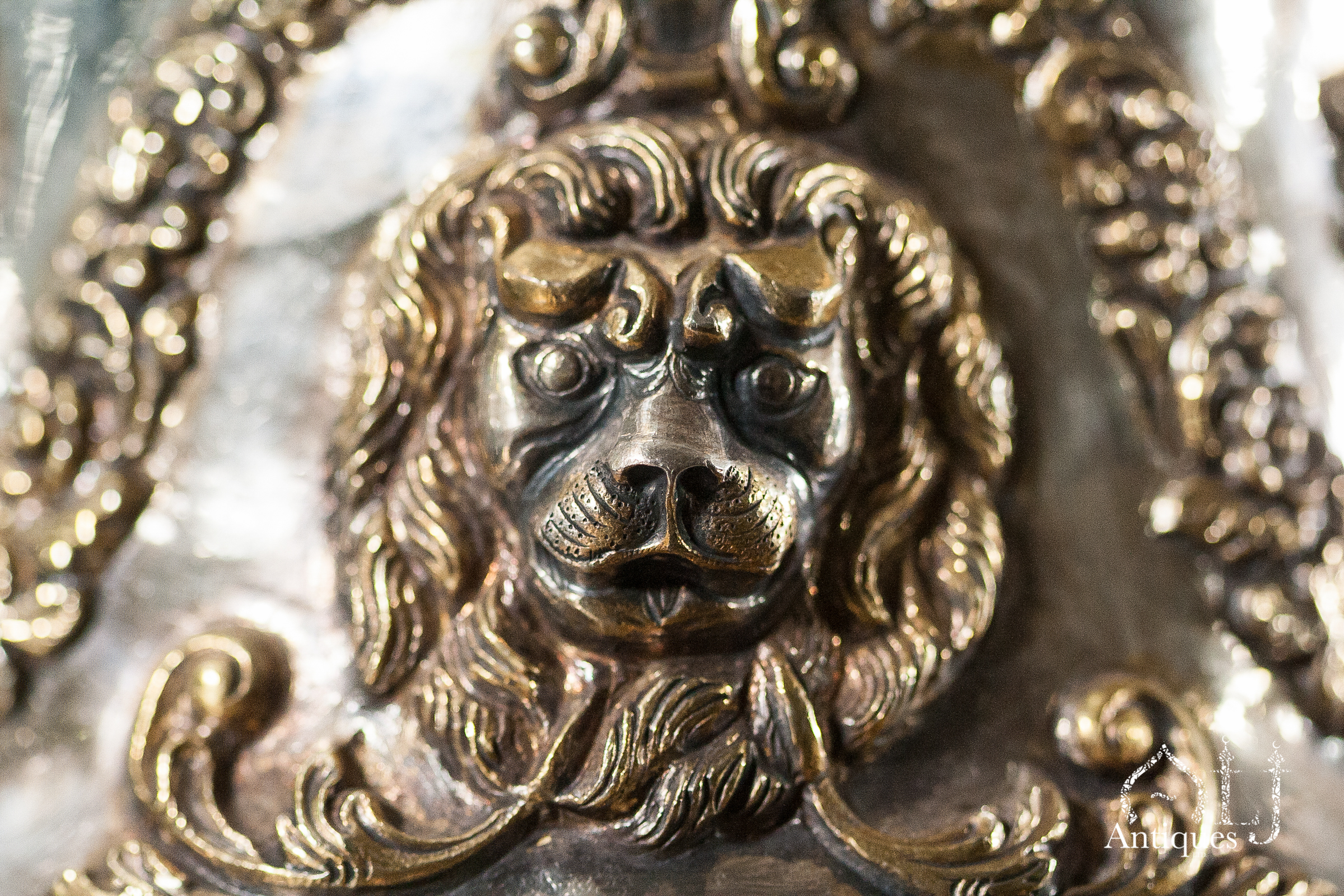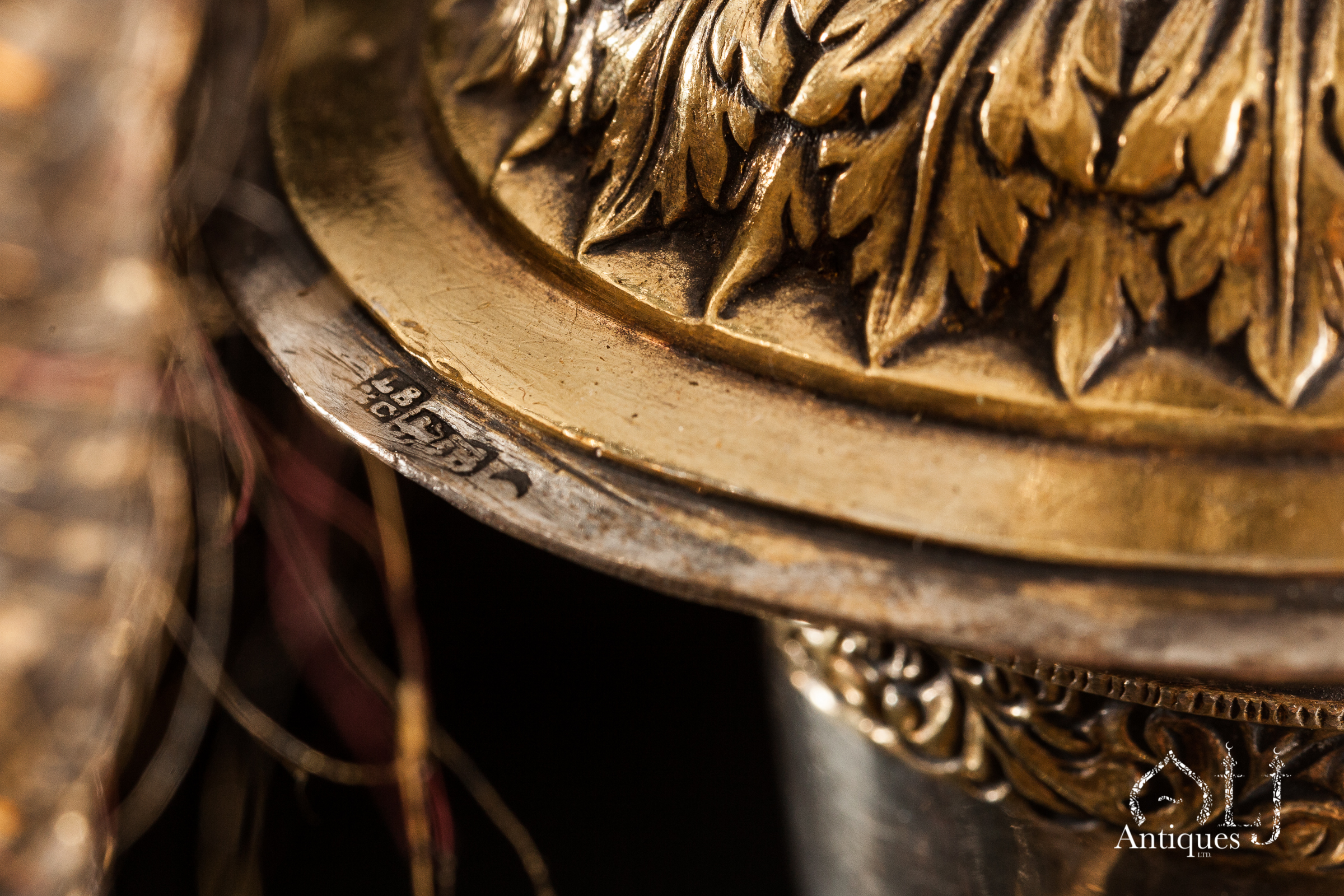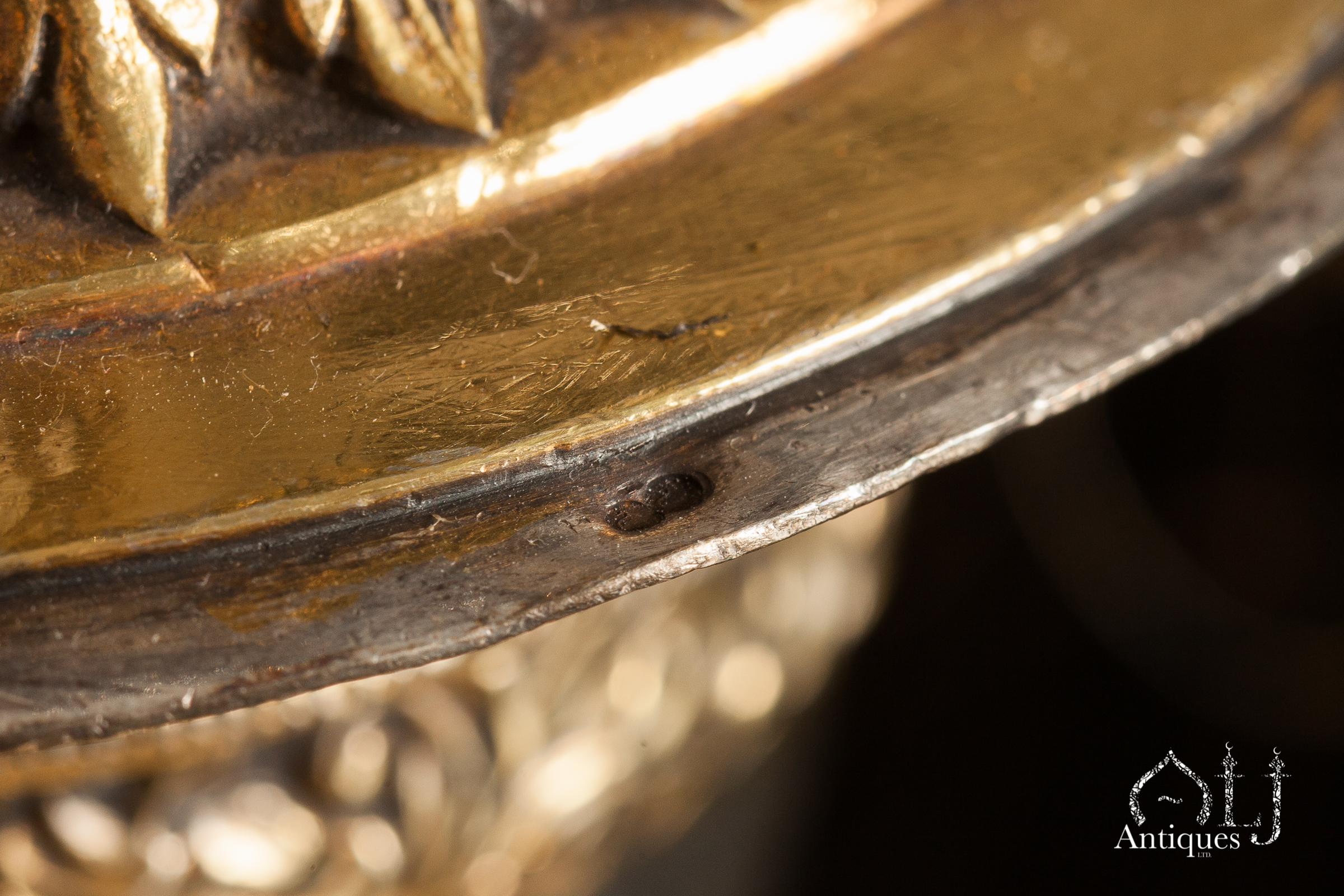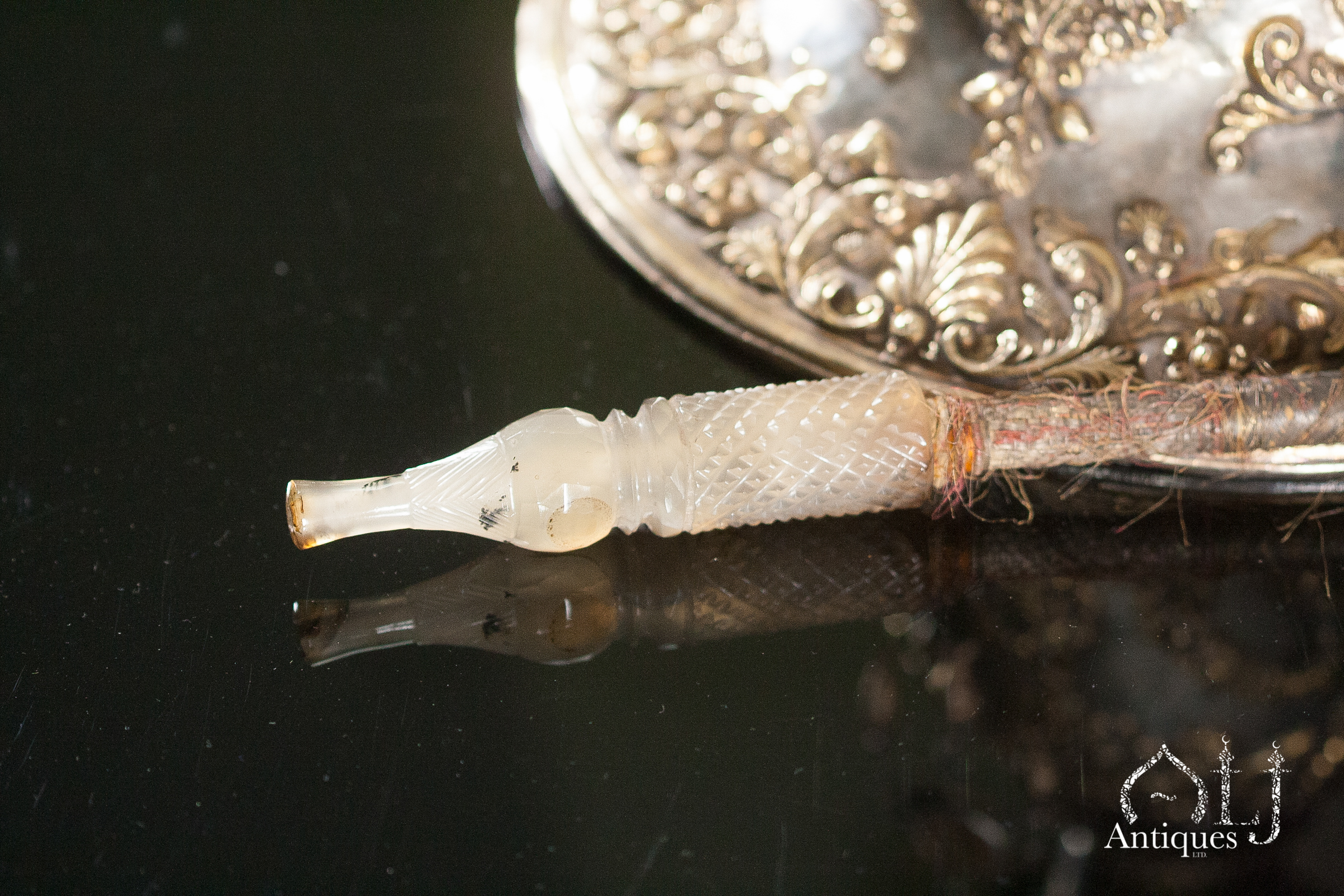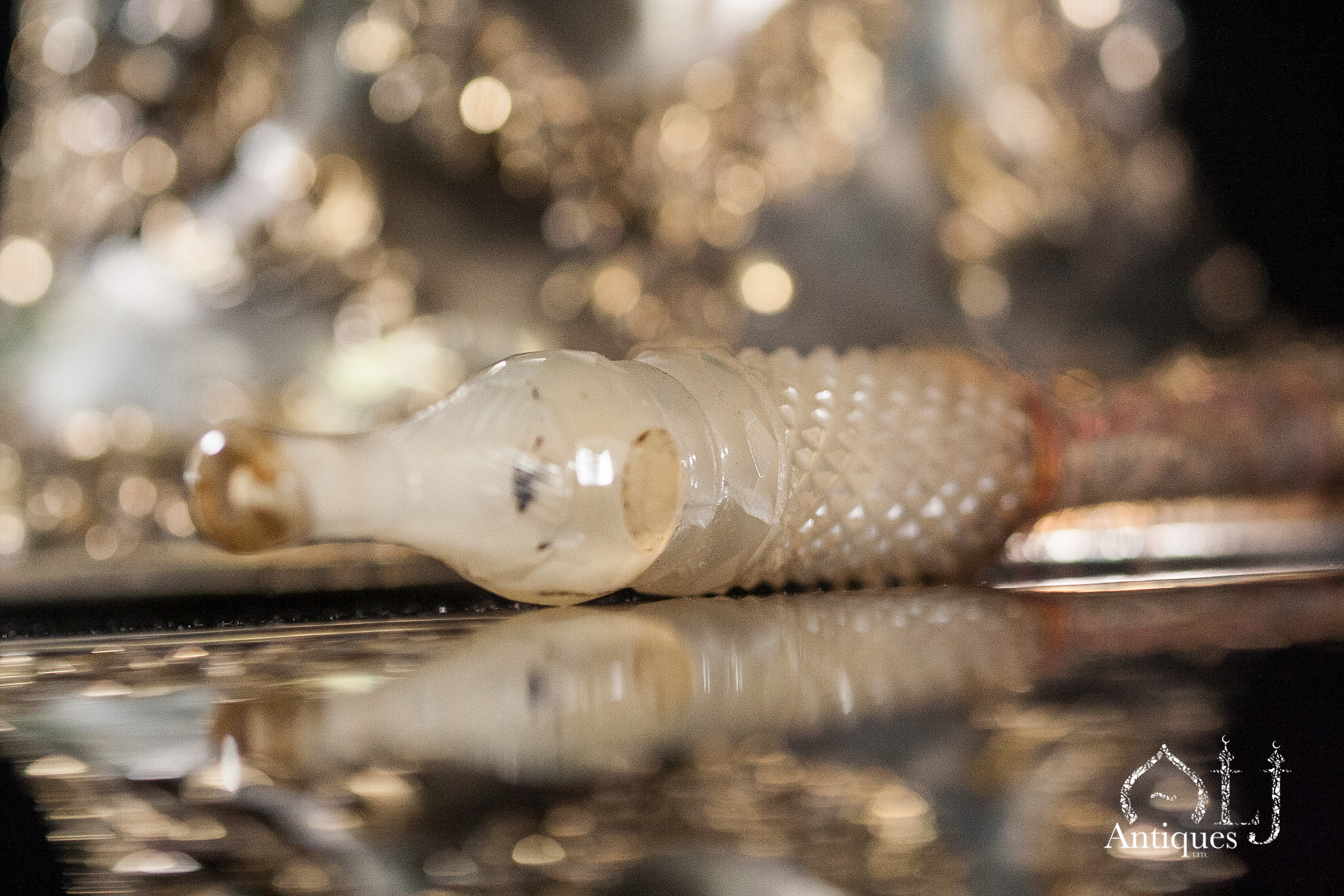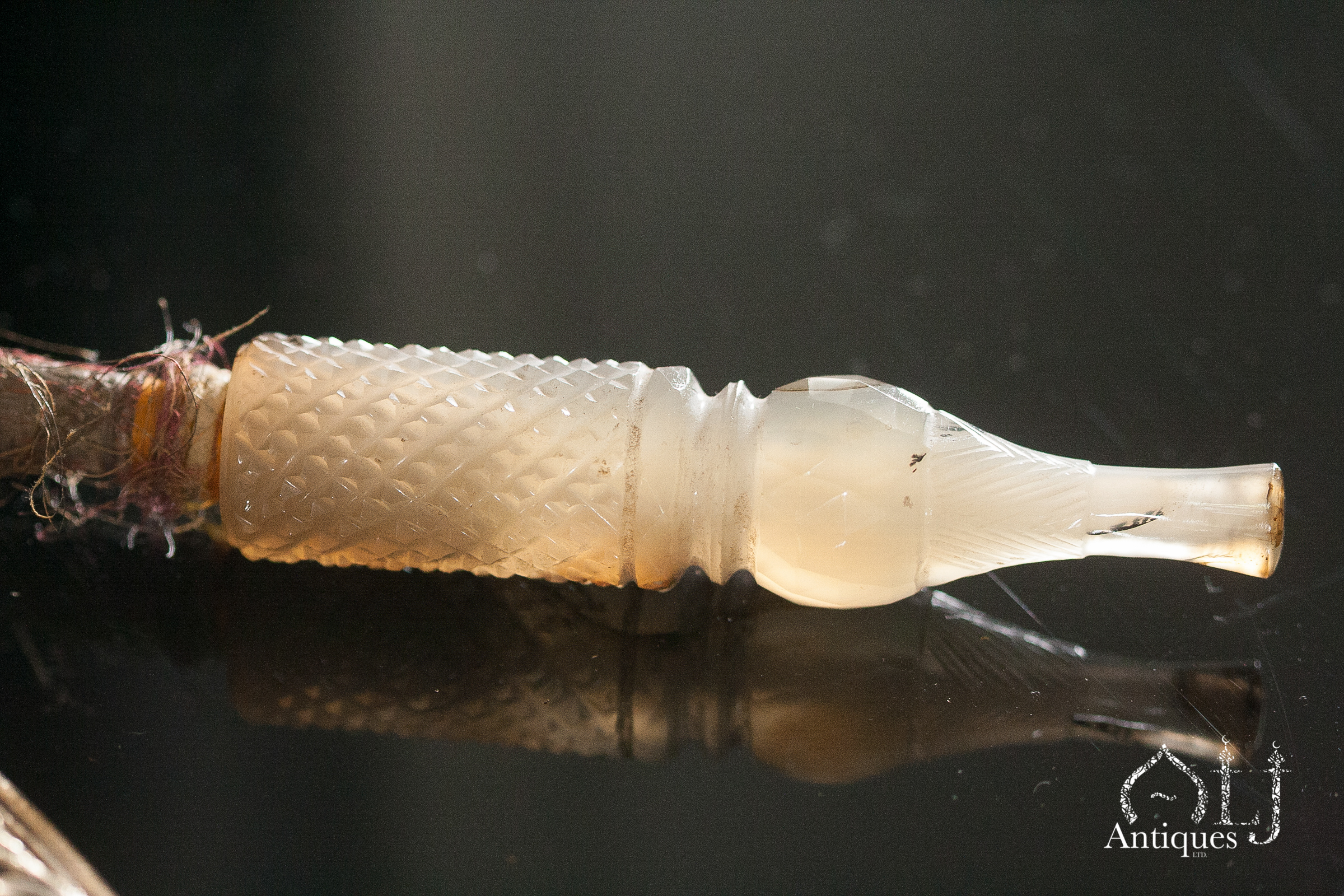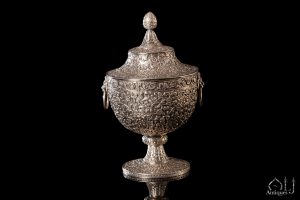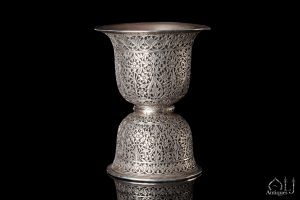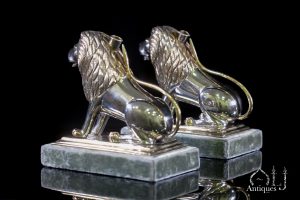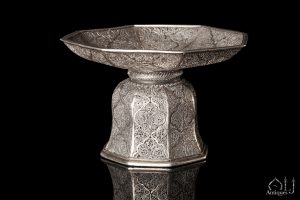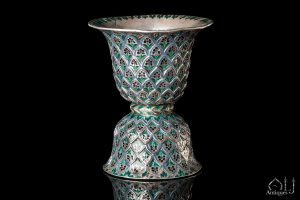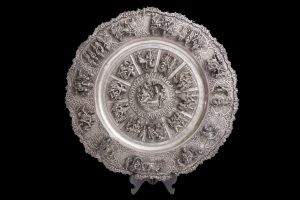Description
By 1900 Calcutta is estimated to have been home to 20,000 Europeans and silverware in its colonial form was widely produced. Little is known of the Calcutta silversmiths Lattey Brothers although it is known that Hamilton & Co. was the first British silversmith to set up shop in Calcutta. Later local silversmiths such as Grish Chunder Dutt and Dass & Dutt, settled in nearby Bhowanipore producing various objects to satisfy both local and European taste.
Hookahs were considered to be part of the entertainment and leisure life of India as smoking hookahs was used to entertain households and social gatherings. They were produced in different parts of India using different materials some of which were expensive and luxurious and sometimes decorated and embossed with precious and semiprecious stones. The more expensive ones were produced from gold and silver and were aimed at serving the Indian elite society and the Europeans who lived in India.
This magnificent and very rare repousse silver complete hookah set was made in the 19th century in Calcutta by the British silversmiths Lattey Brothers and is a superb example of colonial Indian silver work. To find the complete set is quite rare as pieces get lost or damaged with the passage of time. The hookah dismantles into six separate pieces: the base (kali), the stem, which comes in two sections, one end is attached to the base and the other two separate pipes tops are attached one to the tobacco bowl (chilim or chilam) and its ornate lid (chilam push), and the other pipe is attached with the fixable snake-shaped tube, which commonly known as the snake, the tube is finely attached with the detachable carved and faceted agate mouthpiece. The mouthpiece is detachable from the snake-shaped tube and individuals who smoke the hookah each have their own piece that they use rather than use a common mouthpiece, which is more hygienic. All six pieces fit tightly together.
The extremely fine repousse parcel-gilt silver was made in a hybrid style combining both Indian and European taste. The artist had deliberately gilded the embossed decoration with high carat gold water on a plain silver background producing a vivid contrast.
The silversmith had used both the repousse and open work techniques in the making of the tobacco bowl (chilim or chilam) and cover. The bowl is designed in the form of a poppy pod covered with the finest chased floral scrollwork with an acanthus design leading up from the stem. The cover of the bowl is decorated with lion heads (lions are usually associated with royalty, power and high social status) and has an acorn shaped finial that is attached to the bowl with a chain with additional chains suspending decorations of tiny fish, crescent moons and blossoms.
The two stems, one leading to the bowl, the other to the pipe, have been delicately decorated at their centres with finest gilt acanthus leaves.
The maker’s mark of LB&Co English pseudo-hallmarks of
Lattey Brothers, Calcutta, 19th c., is stamped at the lower round disk base that holds the two gilt-silver stems or pipes.
The base is a traditional round shape with a flat base of solid silver covered in chased repoussé gilt designs of beautifully executed lion heads amongst gilt floral scroll. The scrolling foliage is a common Indian and European design with a scallop shape motifs more in common with 17th and 18th century European decoration while the lion heads reinforce both the colonial neo-classical and Indian influence. The top of the base has a further wide and finely chased acanthus leaf border, again highlighted in gold.

